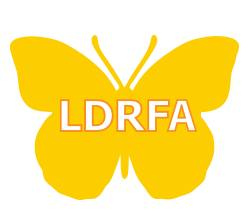Parental detachment, a condition characterized by emotional distance and lack of responsiveness between parents and their children, can have profound effects on a child’s development.
Table of Contents
ToggleThis issue becomes particularly crucial when considering children with learning disabilities, Attention Deficit Hyperactivity Disorder (ADHD), dyslexia, and autism spectrum disorders.
These neurodevelopmental conditions, each with its unique challenges, require heightened parental support and understanding.
Learning disabilities encompass a range of difficulties in acquiring and processing information, affecting areas such as reading, writing, or mathematics.
ADHD is marked by persistent inattention, hyperactivity, and impulsivity that interferes with functioning and development. Dyslexia, a specific learning disability, impacts reading and language processing. Autism, a complex developmental condition, affects social interaction, communication, and behavior.
For children facing these challenges, secure attachment to their parents or primary caregivers is not just beneficial—it’s essential.
Secure attachment, characterized by consistent, responsive, and nurturing parental behavior, forms the foundation for a child’s emotional regulation, social skills, and overall well-being. It provides a safe base from which children can explore their world, develop resilience, and navigate the unique obstacles presented by their neurodevelopmental conditions.
Understanding the interplay between parental detachment and these developmental challenges is crucial for parents, educators, and healthcare professionals alike. By recognizing the vital role of secure attachment, we can better support children with learning disabilities, ADHD, dyslexia, and autism, fostering environments that promote their growth, self-esteem, and potential for success.
The Attachment Theory: How Childhood Affects Life
Understanding Attachment Theory
Harry Harlow and Secure Attachment Experiments
In the 1950s, American psychologist Harry Harlow conducted groundbreaking experiments that shed light on the critical importance of emotional bonding—what psychologists now call “secure attachment”—for healthy development and lifelong well-being.
Harlow’s famous studies involved young rhesus monkeys and two types of surrogate mothers: one made of soft, comforting terry cloth but offering no nourishment, and another constructed of cold wire but equipped with a feeding bottle. The results were striking: despite the wire mother’s ability to provide food, the infant monkeys overwhelmingly preferred the cloth mother, clinging to her for comfort and security.
These young primates used their cloth surrogates as a safe haven, returning to them for reassurance before venturing out to explore their environment. This behavior mirrored the concept of a “secure base” in human child development, highlighting the profound impact of nurturing physical contact and emotional comfort on psychological growth.
Harlow’s work laid the foundation for understanding that love and affection, rather than just the fulfillment of basic physiological needs, are essential for healthy emotional and social development. These findings have far-reaching implications, emphasizing the crucial role that strong, secure attachments with caregivers play in shaping an individual’s ability to thrive throughout their life.
John Bowlby’s – Founding Father of Attachment Theory
John Bowlby, the British psychiatrist and psychoanalyst who pioneered attachment theory, described attachment as a profound emotional connection that shapes our behavior throughout our lives, “from the cradle to the grave.” The bonds formed with caregivers during early childhood have far-reaching effects, influencing how we navigate relationships and friendships, our emotional self-awareness, and our capacity for love and intimacy in adulthood.
Bowlby proposed that these early attachment experiences create an internal working model of relationships that guides a child’s social interactions as they grow. This mental framework, developed through early caregiver interactions, becomes a blueprint for future relationships. It influences how children, and later adults, engage with caregivers, romantic partners, friends, teachers, and colleagues.
For individuals with mental health challenges, this implicit belief system about child-caregiver interactions can significantly impact their social development. It may affect their ability to form secure attachments, regulate emotions, and navigate complex social situations. Understanding this connection between early attachment experiences and later social functioning is crucial for developing effective interventions and support strategies for those facing mental health difficulties.
Mary Ainsworth’s Contributions and Attachment Styles
Mary Ainsworth, a collaborator of John Bowlby, conducted the first comprehensive study of infant attachment in Uganda from 1953 to 1955. This groundbreaking research observed 28 unweaned infants from 23 families across six villages. The local custom of transferring babies to their grandmothers upon weaning provided a unique opportunity to study separation behaviors.
Ainsworth’s findings revealed a clear correlation between parenting styles and attachment patterns:
- Secure attachment: Developed in infants whose mothers were responsive and attuned to their needs.
- Insecure attachment: Observed in babies whose mothers were detached, inconsistent, or unpredictable.
The study identified:
- 5 infants who failed to form any attachment, linked to consistently unresponsive or erratic parenting.
- 7 babies with insecure attachments, struggling with separation, likely due to maternal inconsistency or insecurity.
These observations laid the foundation for understanding attachment styles and their impact on child development. Since Bowlby’s era, numerous real-world scenarios have reinforced the theory that secure bonding is crucial for infant well-being and healthy emotional development.
Ainsworth’s work not only supported Bowlby’s attachment theory but also expanded our understanding of how early caregiving experiences shape a child’s social and emotional trajectory. This research continues to influence child psychology, parenting practices, and interventions for promoting healthy attachments.
The Impact of Parental Detachment on Neurodivergent Individuals
Parental detachment can have profound and far-reaching consequences for neurodivergent individuals, exacerbating the challenges they already face due to their unique neurological differences. Learn how Parental Detachment affects individuals with ADHD, learning disabilities, dyslexia, and autism:
Effects on Individuals with ADHD:
- Increased emotional dysregulation: Children with ADHD often struggle with emotional control, and parental detachment can worsen this, leading to more frequent outbursts and mood swings.
- Heightened impulsivity: Without consistent parental guidance and support, individuals with ADHD may have greater difficulty managing their impulsive behaviors.
- Lowered self-esteem: The lack of positive reinforcement and understanding from detached parents can significantly impact self-worth, potentially leading to depression and anxiety.
- Academic struggles: ADHD often requires tailored support in educational settings. Parental detachment may result in inadequate advocacy for necessary accommodations, leading to poorer academic outcomes.
Consequences for Those with Learning Disabilities:
- Delayed identification and intervention: Detached parents may be less likely to notice early signs of learning disabilities, delaying crucial early interventions.
- Reduced home support: Learning disabilities often require consistent support and practice at home. Parental detachment can result in a lack of this crucial reinforcement.
- Increased frustration and giving up: Without parental encouragement and understanding, individuals with learning disabilities may become more easily discouraged when facing challenges.
- Social skill deficits: Many learning disabilities affect social skills, and parental detachment can exacerbate these difficulties by not providing adequate modeling and guidance.
Implications for People with Dyslexia:
- Reading avoidance: Without parental encouragement and support, individuals with dyslexia may be more likely to avoid reading, further hampering their progress.
- Lower academic self-concept: Parental detachment can lead to a lack of understanding about dyslexia, potentially causing individuals to internalize academic struggles as personal failures.
- Missed opportunities for specialized support: Detached parents may be less likely to seek out or consistently implement specialized reading interventions crucial for dyslexic individuals.
- Increased anxiety about school performance: The combination of dyslexia-related challenges and a lack of parental support can lead to heightened anxiety about academic performance.
Impact on Individuals with Autism:
- Delayed social skill development: Autism often requires intentional teaching of social skills. Parental detachment can result in fewer opportunities for guided social interactions and skill-building.
- Increased sensory sensitivities: Without parental understanding and accommodation, individuals with autism may struggle more with sensory overload and related anxieties.
- Communication challenges: Autism can involve unique communication needs. Parental detachment may lead to less support in developing effective communication strategies.
- Difficulty with transitions and change: Many autistic individuals struggle with changes in routine. Detached parenting can result in less preparation and support during transitions, potentially increasing anxiety and meltdowns.
It’s crucial to recognize that while parental attachment is important for all children, it plays an even more critical role for neurodivergent individuals. These children and adults often require more intentional support, understanding, and advocacy to navigate a world that isn’t always designed for their unique neurological profiles. Secure attachment and engaged parenting can provide a strong foundation for developing resilience, self-understanding, and the skills necessary to thrive despite the challenges associated with neurodivergence.
The Silent Crisis: How Emotional Neglect Shapes Young Lives
Emotional neglect, particularly in institutional settings, can have devastating effects on children’s development, shaping their futures in ways that extend far beyond their early years.
Children who spend their formative years in institutional settings where they receive physical care but lack emotional bonding often face a myriad of developmental challenges. These issues can manifest in various ways, affecting nearly every aspect of a child’s growth and well-being:
Weakened Immune Systems: The absence of emotional nurturing can compromise a child’s physical health, making them more susceptible to illnesses.
Impaired Physical Development: Many of these children struggle to meet typical growth milestones, often failing to gain weight and height at expected rates.
Motor Skill Deficits: The lack of stimulating environments and interactions can lead to delays in the development of both fine and gross motor skills.
Learning Disabilities: Cognitive development can be significantly impacted, potentially resulting in various learning challenges as these children enter educational settings.
Social Interaction Difficulties: Without proper emotional modeling and support, children may struggle to develop the social skills necessary for healthy relationships.
Sleep Disorders: The stress of emotional neglect can manifest in sleep disturbances, further impacting overall health and development.
Mental Health Issues: Depression and anxiety are common among children who have experienced prolonged emotional neglect.
Autism-Like Symptoms: In severe cases, some children may exhibit withdrawal behaviors reminiscent of autism spectrum disorders.
Perhaps the most recent extreme case of lack of emotional stimuli in early childhood is that of Danielle, a horrific case of child neglect. When Danielle’s situation was finally getting the attention of the police and child protective services, Danielle was seven, but she was still in rarely changed diapers, locked in a small room, never attended to, never talked to, never experienced any signs of affection. She was undernourished, unable to speak and had suffered severe brain damage as a consequence of the physical and emotional neglect. Now a teenager, she still is unable to speak and, mentally, she is not much older than a very young child.
Danielle’s case is extreme. And rare, thankfully. But insecure attachment is not. Recent reports reveal that a shockingly high number of children are not securely attached to their parents.
This complex web of challenges underscores the critical importance of emotional nurturing in early childhood. While physical care is undoubtedly essential, it is the combination of care and love that truly allows a child to thrive.
Conclusion
The profound impact of emotional neglect on children’s development cannot be overstated. From weakened immune systems to impaired cognitive abilities and social skills, the consequences of growing up without love and emotional nurturing are far-reaching and long-lasting.
While the statistics on insecure attachment are concerning, there is hope. With increased awareness, early intervention, and support for caregivers, we can work towards breaking the cycle of emotional neglect.


